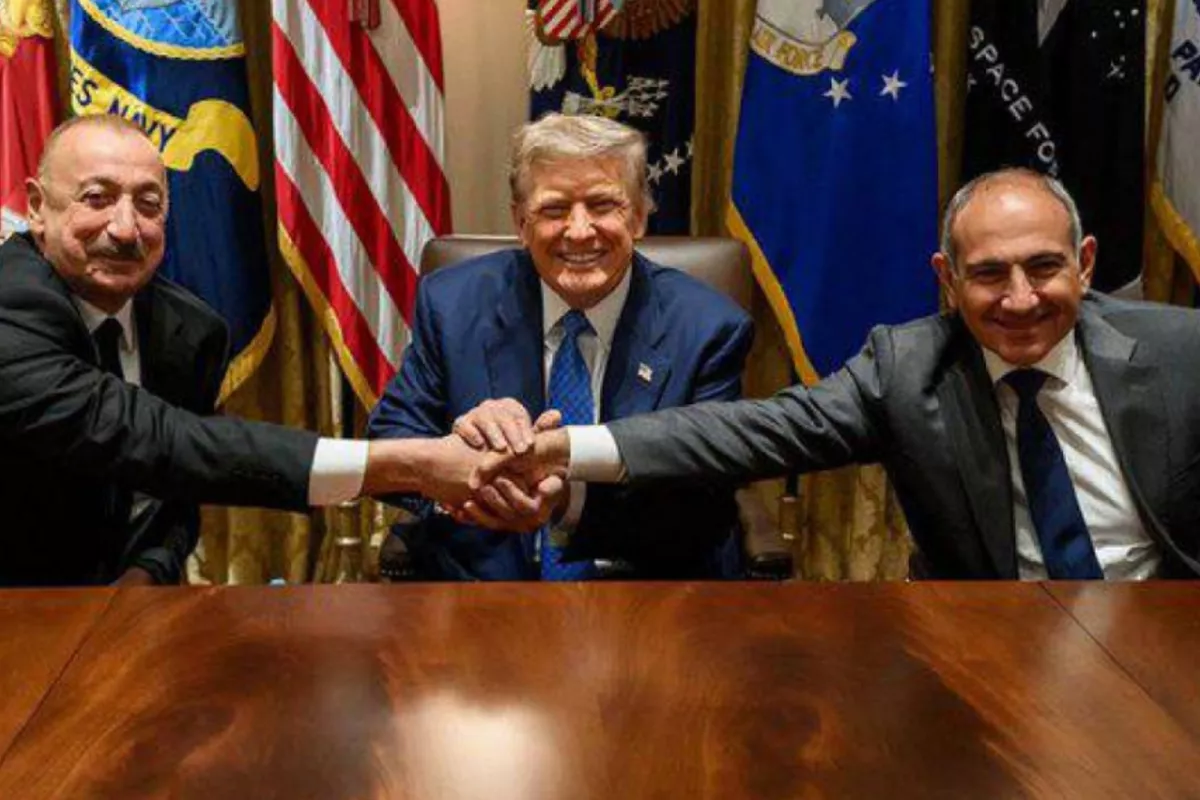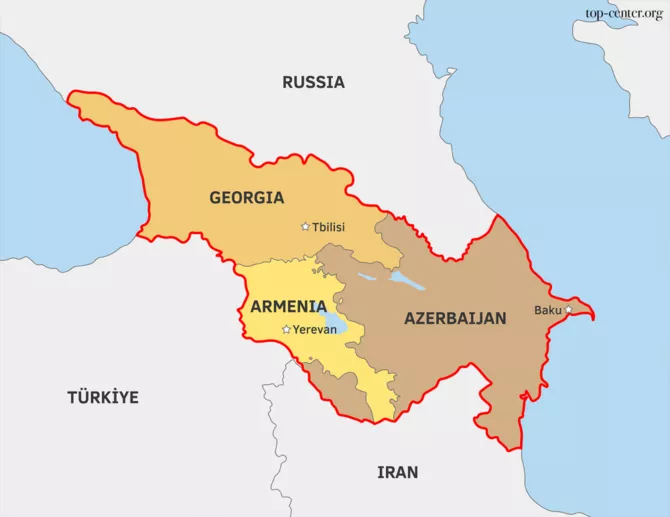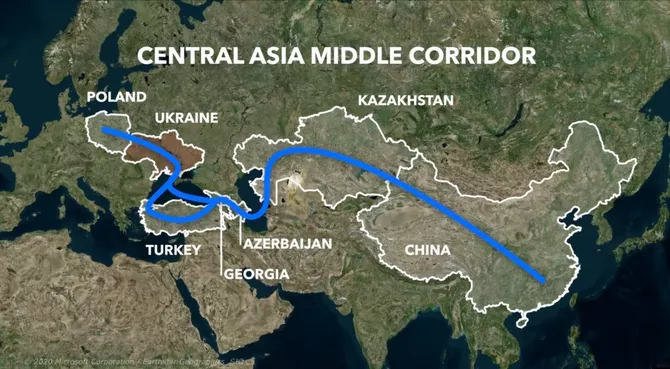
The August 2025 Washington summit between the leaders of Azerbaijan and Armenia, mediated by U.S. President Donald Trump, marks a pivotal moment in South Caucasus geopolitics, signaling a fundamental realignment of regional power dynamics.
By establishing the Trump Route for International Peace and Prosperity (TRIPP), a transportation corridor with exclusive U.S. development rights, the agreement repositions Washington as the primary arbiter and strategic partner in the region, The Caspian Post reports, citing Malaysia’s leading media outlet Astro Awani.

This new diplomatic framework, driven by pragmatic geo-economic interests, shifts the regional balance of power while redefining Russia’s traditional role in the South Caucasus.
To understand how Washington seized this pivotal moment, the agreement must be viewed against the backdrop of the conflict’s history and the collapse of earlier mediation frameworks. The Armenia-Azerbaijan conflict, which began in 1988 and escalated into full-scale war after the USSR’s dissolution, defied decades of peace efforts. The OSCE Minsk Group-co-chaired by Russia, the U.S., and France-produced no lasting results. The outcomes of Azerbaijan’s military operations in 2020 and 2023, ending the Armenian occupation, altered the balance of influence in the region, creating space for various diplomatic actors. This power vacuum, coupled with the discrediting of previous formats, opened the way for the United States to step in with a fresh diplomatic approach grounded in pragmatic geo-economic interests.
The summit underscored the U.S. dual strategy of coupling diplomacy with tangible, future-facing engagement. In Baku’s case, Trump lifted long-standing Section 907 restrictions, enabling deeper defense and security cooperation. For Yerevan, Washington signed memoranda supporting the opening of regional transportation routes and enhancing collaboration in energy and artificial intelligence. Together, these measures elevate the U.S. from peacemaker to strategic partner, posing challenges to Russian and Iranian influence.
It is within this broader context that TRIPP-arguably the most complicated element-must be understood. The route through Armenia’s Syunik region (“Zangezur” in Azerbaijani term) will link mainland Azerbaijan to its Nakhchivan exclave and, beyond that, to Türkiye. Incorporating railways, energy pipelines, and fiber-optic lines, TRIPP’s significance lies not only in its infrastructure but in its management model. Under the agreement, the U.S. holds exclusive development rights, while the corridor remains under Armenian legal jurisdiction. This arrangement redefines the project from a contested regional initiative to a direct instrument of U.S. policy, sidestepping sovereignty disputes that previously stalled negotiations and ensuring Washington, rather than Moscow, acts as guarantor and operator. In effect, TRIPP becomes both a physical link and a strategic lever, embedding geo-economic ambitions within the peace framework.
The shift in mediation structures was underscored by another landmark outcome: Azerbaijan and Armenia’s joint request to dissolve the OSCE Minsk Group. Far from symbolic, this move formally ends the uncertain and indecisive format of the past three decades. It also reflects the wider geopolitical realignment triggered by Russia’s weakened influence after its 2022 invasion of Ukraine, creating conditions in which Moscow’s displacement from the South Caucasus was not only possible but strategically inevitable. Russia, instead of constructive engagement, always preferred the “divide-and-rule” policy in the so-called near abroad.
The U.S.-brokered agreement secures Washington’s strategic foothold in the South Caucasus, shifting regional dynamics away from traditional Russian and Iranian dominance. By anchoring TRIPP within the broader "Middle Corridor," the deal enables a new East-West transit axis that bypasses Russia and Iran.

Presented as a commercially driven infrastructure initiative, spanning energy, rail, and digital networks, the corridor is structured to attract U.S. private investment while serving a clear geopolitical agenda. Moreover, the accord dovetails with U.S. efforts to elevate Washington’s regional role through diplomatic innovation.
Türkiye welcomed the peace deal and the corridor, viewing it as the strategic missing link in its Middle Corridor vision, one that will accelerate overland trade between Europe and Asia via Türkiye. This infrastructure link complements Türkiye’s broader diplomatic and economic outreach in Eurasia, aligning with its ambitions to be both a regional hub and a bridge between continents. In doing so, TRIPP advances Ankara’s long-standing goal of regional interconnectivity while cementing its position as an indispensable player in the evolving geopolitical landscape of the South Caucasus and Central Asia. The ability to move goods, energy, and data seamlessly across this route is expected to significantly accelerate overland trade between Europe and Asia via Türkiye, reducing transit times, lowering costs, and diversifying supply chains away from Russian and Iranian routes.
Russia’s public response to the Washington agreement was measured, with the Foreign Ministry welcoming any steps toward stability in the South Caucasus. Beneath this diplomatic restraint, however, lay clear resentment. Russian politicians and commentators accused Armenia of strategic betrayal, warning that the deal sidelines Moscow’s role as the region’s chief mediator. TRIPP directly erodes Russia’s leverage, both as a peace broker and as a key player in the Eurasian transportation and transit ecosystem.
On the other hand, Iran publicly welcomed the peace accord but cautioned that any project near its borders must "respect national sovereignty and territorial integrity, without foreign interference." Senior officials, notably Ali Akbar Velayati, issued harsher warnings, pledging Iran would block the U.S.-brokered corridor “with or without Russia,” branding it a geopolitical threat that would become "a graveyard for Trump’s mercenaries." Tehran is concerned that the corridor undermines its strategic transit role and inserts a Western presence along its Armenian frontier-red lines it has vowed to defend.
For Azerbaijan, the deal fulfills long-standing strategic aims, including a secure link to Nakhchivan and the lifting of Section 907 restrictions. For Armenia, it marks a high-stakes pivot toward the West, the end of regional isolation with potential economic gains tempered by domestic backlash over constitutional changes necessary for long lasting peace with its neighbours. The Washington agreement is both a milestone of U.S.-led diplomacy and the opening of a new chapter in South Caucasus geopolitics, set against a rapidly shifting balance of power. Ultimately, the accord serves as a crucial turning point, providing a framework for peace that addresses the long-standing demands of both nations while fundamentally reordering the region's geopolitical landscape.
By Vusal Guliyev
Policy Advisor at the Baku-based Center of Analysis of International Relations (AIR Center)
Share on social media